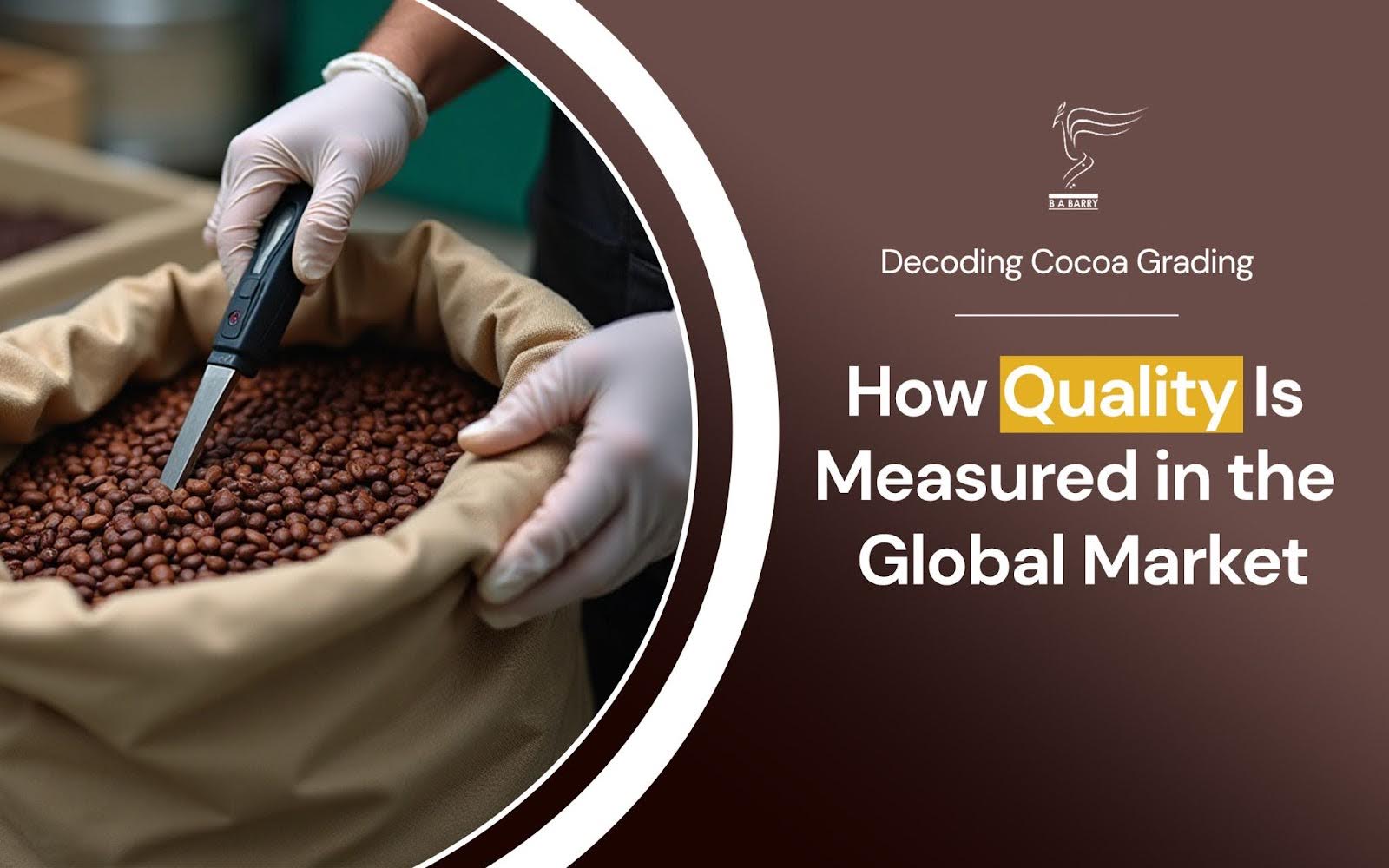- Tokyo : 15:19 |
- Singapore : 14:19 |
- Dubai : 10:19 |
- London : 06:19 |
- New York : 01:19 |
- Sydney : 17:19

Cocoa is the main ingredient of everyone’s favorite: Chocolate. Before cocoa beans reach the chocolatiers, candy makers and other manufacturers, they’re rigorously tested and sorted by quality. This grading system shapes the international markets, determining the prices, farming practices and flavor profiles.
Today, we will be peeling back the layers of cocoa to see how they are graded for quality in the global market.
At the apex of the cocoa industry sits the International Cocoa Organization (ICCO). Established in 1973, it is an inter-governmental body organization formed under the United Nations. It hosts both cocoa-producing and cocoa-consuming countries, boasting a total of 51 member countries at present. All the final decisions are taken by the International Cocoa Council, the highest governing body of the ICCO.
The key roles of the organization include setting global benchmarks for quality and grading, market monitoring and capacity building to improve farming and post-farming practices.
ISO 2451:2017 lays down the specifications and quality requirements for cocoa beans in the global market. It discussed the following aspects:
Classification and Grading
Moisture Content
Defects
Flavor Profile
The specifications laid down with regard to the aspects mentioned above are as follows:
The moisture content of the cocoa bean should not exceed 8%. Too much moisture can produce mold, while too little can lead to dry, brittle beans with no valuable flavor oils.
Bean size and count are measured as the number of beans per 100 grams. If there are fewer beans, it means there is a larger average size. Larger beans often fetch a premium because they’re easier to process uniformly.
Proper fermentation is necessary for unlocking the flavor of the beans. Inspectors perform a ‘cut test,’ slicing the bean vertically into two halves to analyze the fermentation level and identify problems like infestation, pest damage or mold. The present requires 300 beans to be opened. A good fermented bean is evenly brown with minimal violet or slaty hues.
Cocoa beans should be free of defects. Moldy, slaty, insect-damaged or off-smelling beans are considered major defects. Similarly, broken pieces, flat beans or under-fermented spots are minor defects. They count and categorize the beans. A higher defect count lowers the overall grade of the bean.
Flavor profiles include standards for characteristic aroma, bitterness and acidity.
Cocoa beans are graded on the basis of the count of defective beans in the cut test. The three grades of cocoa beans are:
Grade I
Grade II
Sub-standard
Let’s take a more detailed look at what each of these grades entails.
Maximum 3% of moldy, slaty, insect-damaged or flat beans by count
Not more than 12% of beans outside the range of plus or minus 1/3rd of the average weight
Moldy beans should not exceed 4% by count
Slaty beans under 8% by count
Insect-damaged, flat beans or germinated not exceeding 6% by count
If a bean is defective in more than one respect, it is recorded in only one category, which is the most objectionable category. The gravity of order for the defect is as follows:
Moldy beans
Slaty beans
Insect-damaged, flat beans or germinated
Dry cocoa, which does not meet requirements for Grade II beans, is regarded as Sub Standard (SS). These are to be marketed under special contracts.
To avoid confusion between cocoa beans and cacao beans, read our blog Cocoa Powder vs. Cacao Powder: What’s the Difference?
Premium grade is specifically for retailers who demand uniform sizes of beans with no wastage. Here, the beans have to go through extra sorting and cleaning. Moreover, only 70% of the regular beans are selected. These are obtained post-fermentation and sun drying. The characteristics of premium-grade cocoa beans are:
Less than 90 beans per 100 gms (bean count)
3% or less of slaty, moldy beans
Less than 5% of defective or fat bean
0-4% of fermentation
6-7.5% of moisture (maximum)
Less than 100 beans per 100 gms (bean count)
Includes 85% of regular beans after sorting
4-6% of major defects per 100 gms
Less than 110 beans per 100 gms (bean count)
May contain flat or broken beans due to a lack of second-level cleaning and sorting
7-11% of major defects per 100 gms
These beans have lower flavor intensity.
Some producers and manufacturers may add an added layer of grading, thus creating more grades. It is important to ask for important details about moisture, fermentation, bean count and defects before buying the beans.
B A Barry offers high-quality cocoa powder sourced from the finest cocoa beans. Our 4 variants of premium cocoa powders come from the popular farms of Brazil and Côte d'Ivoire. Take a look at the variants below:
Natural Gold Cocoa Powder: Light-brown, smooth, lump-free texture. It boasts a natural aroma, ideal for baked goods and beverages.
Natural Cocoa Powder 8%: Sourced from organic cocoa beans, rich chestnut brown color and deep aroma. Results from the advanced process for roasting & fine grinding.
Imperial Natural Cocoa Powder: Made of the finest roasted cocoa beans with a gluten-free composition for an authentic chocolate taste.
Côte d'Ivoire: Sourced from world-popular Côte d'Ivoire farms, this premium cocoa powder boasts deep color, smooth texture and authentic experience.
Visit our website and experience superior quality at an affordable cocoa powder price. Enjoy the finest there is.
Read our blog on Bulk Cocoa Powder: Red Flags to Avoid When Sourcing to be more mindful.